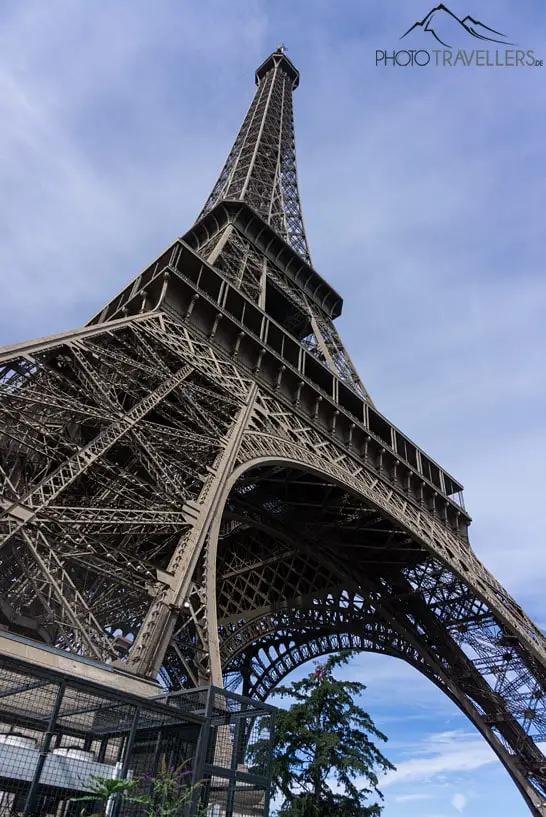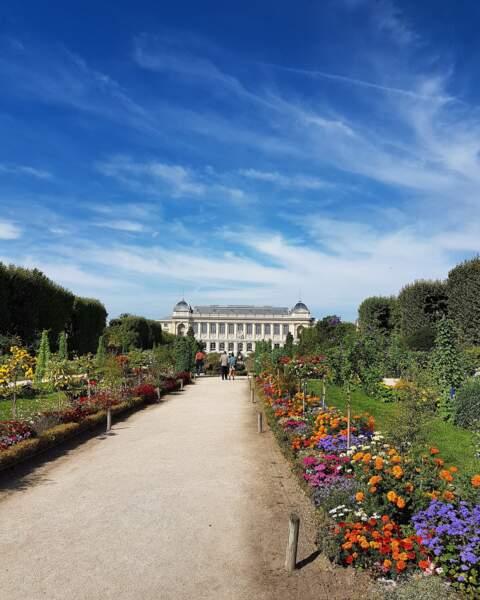The building is so richly decorated that one does not know where to look. At the end of March, the Hôtel de Beauharnais, located in the 7th arrondissement of Paris, exceptionally opened its doors to a privileged few during the European Art Trades Days (JEMA), whose country of honour was Germany. What does this have to do with the Hôtel de Beauharnais? This private residence in Paris, built in 1713 (when the left bank of the Seine was undergoing heavy urbanisation) has been the home of the German ambassador since 1962. "Here, we are not in a museum, but in a diplomatic place subject to a protocol of reception", warns our guide, Francoise de Guilhermier-Jacquot, lecturer of the National Museums. It is forbidden, for example, to photograph the salons or to get lost in the corridors...
However, from the entrance hall, which is as marbled as you could wish, the visitor is quickly tempted to stroll. The Hôtel de Beauharnais, which was an important place of Napoleonic power, has a décor and Empire-style furniture that is unique in France. " Some of the rooms are a visual shock ," says our guide. For this residence has a significant advantage over other key places of the Empire, such as the castles of Fontainebleau, Compiègne or Rueil-Malmaison, which have now become museums. Here, a precise inventory, dating from 1817, has enabled the numerous restoration campaigns to remain faithful to the original layout. In other words, the rooms in the Hôtel de Beauharnais today are as they were in Napoleonic times.... The "green room", for example, adjoining the vestibule, has retained its Egyptian-inspired style with its woodwork, sculpted and gilded ornaments and green silk chairs, called gourgouran. An oriental architectural vestige that had spread throughout France after Bonaparte's Egyptian campaign, from 1798 to 1801...
The empress Josephine spent lavishly to embellish it
GEO Histoire had the privilege of discovering -and photographing- the other salons of this plenipotentiary residence which had an exceptional destiny during the Consulate (1799-1804) and the First Empire (1804-1815). After the French Revolution, the hotel was looted and rented in 1803 to Eugène de Beauharnais (1781-1824), son of Joséphine de Beauharnais, the wife of the First Consul Napoleon Bonaparte. In other words, the son-in-law of the future emperor! " Joséphine was looking for an establishment worthy of his rank for Eugène, as he was, at that time, considered to be Bonaparte's successor," adds Francoise de Guilhermier-Jacquot. In three years, Joséphine, who had meanwhile become empress, and her daughter Hortense, spared no expense in the splendour of this hotel. This triggered the emperor's wrath. The library, which opens onto the garden and occupies a central place on the ground floor, is a convincing example of the richness of the furniture. It has retained its original decoration: two monumental bookcases attributed to the workshops of the cabinetmaker Jacob-Desmalter and decorated with gilded swan locks. " This is the mythological symbol of Eugene, who became Viceroy of Italy and Duke of Leuchtenberg during the Empire through his marriage to the daughter of the King of Bavaria," explains the guide.
Faced with such exorbitant costs, the emperor withdrew Eugene's right to use the hotel in 1806 and used it as an official residence reserved for distinguished guests such as his brother, Jérôme Bonaparte, who had become King of Westphalia. " The relationship between Napoleon and Eugene was nonetheless very good. In fact, the latter stayed at the hotel several times from 1812 onwards ", Francoise de Guilhermier-Jacquot adds.
A bedroom, a bathroom and a Turkish boudoir without equal in France
To find the treasures of the Hôtel de Beauharnais, you have to take the stairs and linger on the first floor. The first visual shock is the splendid "Salon of the Four Seasons", a room that reflects Empress Joséphine's decorative project - and costly one at that - " Noble simplicity and calm majesty ". With its four paintings representing the allegories of the seasons and Pompeian dancers, the Grand Salon, as it was called in the 1817 inventory, is one of the most beautiful interior designs of the Empire. Another room with a unique layout, another emotional shock: a bedroom decorated with a ceiling that has been preserved since its creation! The four-poster bed is also the only example of a ceremonial bed in a Parisian hotel of the period.
But the highlight of this visit to the Hôtel de Beauharnais is the tiny - but no less sumptuous - bathroom. Its decoration follows the models of Roman antiquity: columns and frescoes worthy of the most beautiful thermal baths in Rome. Next to it, a Turkish boudoir serves as a rest room once the bath is over. It is a rare testimony of oriental fashion around 1800. Along the ceiling, our eyes linger on a frieze relating the daily life of a young woman in a slave market and then in the harem of a pasha. An invitation to escape that was greatly appreciated by the owners who succeeded Eugène de Beauharnais: the Prussians.
After the fall of Napoleon in 1814, the building was requisitioned by King William III of Prussia, one of the victors against the emperor, before being sold to him. And it is to him that we owe the precious inventory of 1817, which still allows the Hôtel de Beauharnais to be the most faithful residence to the Empire style... Among the guests from across the Rhine, Chancellor Otto von Bismarck, in 1862, liked to work in the Turkish boudoir, which was the only heated room. It was not until the birth of the German Empire in 1871 that the Hôtel de Beauharnais became the official seat of its embassy until the end of the Second World War. It was then given to Germany in 1962 by President Charles de Gaulle as a sign of peace between the two countries. Here, we prefer to use the word "restituted ", concludes Francoise de Guilhermier-Jacquot, a little ironically.
Can we go there? Closed to the public, including during the Heritage Days, the Hôtel de Beauharnais is open, discreetly, on the first two Mondays of the month for a short morning visit (subject to last-minute cancellation due to the German ambassador's schedule). Please note: very limited number of visitors. No photos allowed. Visits are already fully booked until June, but will be open again from the beginning of the school year. Registration only online (sometimes accompanied by a letter of motivation).
Related articles
What are the closest ski resorts to Paris?

Shopping in Paris: the top shopping centres in Paris

Paris with children - the 20 top highlights for families

What to do in Paris if you love nature: 10 must-see places
Halal restaurant Paris: the top 42 best places

Top 8 Places to Celebrate New Year's Eve 2024 in Paris

Where to sleep in Paris: tips and the best districts to stay in

The 8 best hotels with swimming pool in Paris



